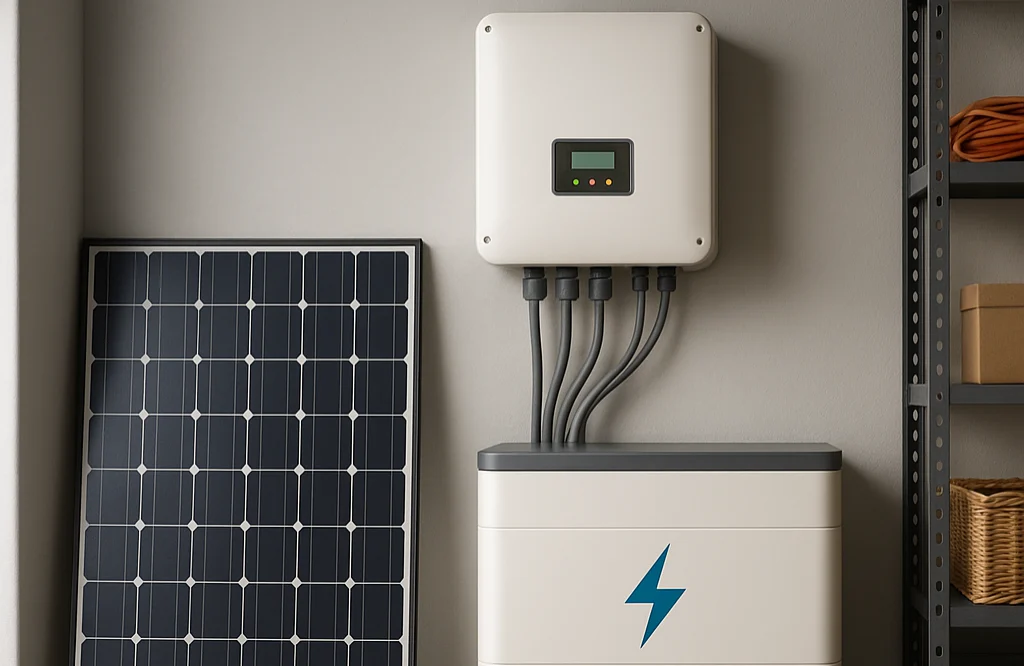2025-05-14
In recent years, in the process of promoting the construction of 5G networks, broadband and smart cities, the communications industry has encountered a more and more severe problem: the electricity cost for base stations has been rising more and more. Especially in the cases where communication base stations are dense and the operation time is long, relying on municipal power not only involves huge expenses but also faces problems such as unstable power supply and low power efficiency.
In the wake of this challenge, increasing numbers of operators and equipment integrators have begun seeking new energy-saving devices and alternative energy sources, hoping to be able to manage energy costs well while ensuring communication continuity. Among them, indoor photovoltaic energy storage cabinets are becoming an extremely valued technical method.

Traditional base stations usually take mains power as the basic power source, backed up by UPS or diesel generators as reserve power sources. Although this configuration is mature enough, there are the following critical problems in the long term:
The cost of electricity keeps going up: especially during peak times, electricity accounts for the lion's share of base station operational and maintenance costs.
Low energy efficiency usage: Relying solely on municipal power, not considering using renewable energy at all;
Complex maintenance and operation: Operation and maintenance of mains power and diesel engines require being carried out from time to time, refueling, and inspecting for safety risks.
High pressure on the environment: Traditional power supply mode is highly emissions, which is unfavorable for the communications industry to achieve carbon neutrality.
Driven by the twin goals of "improving quality and efficiency" and "dual carbon", the base station power system needs to be upgraded at the earliest.
New alternative energy solution: Photovoltaic energy storage cabinets for indoor use
To address the pain points of base station energy, Huijue Technology launched the HJ-Z series indoor photovoltaic energy storage cabinets. It is an indoor floor-standing device which highly integrates photovoltaic power generation systems, energy storage batteries, inverter modules and intelligent control systems. It can be used in scenarios such as communication base station rooms and distribution rooms, and can achieve "self-generation of power, self-storage of energy and self-management" of base stations.
Dramatically reduce the cost of city power
The HJ-Z series power storage cabinets generate electricity for the site in the daytime by utilizing photovoltaic modules, and simultaneously store surplus electric power in the on-board battery. When nights or the period without light arrive, it is driven by battery discharge. This "peak shaving and valley filling" feature can significantly reduce the consumption of the city power supply and effectively save operating electricity expense.
The noise-free and zero-emission photovoltaic power generation has recyclable energy storage batteries. Not only does this reduce carbon emissions, but it also avoids the pollution risks introduced by diesel power generation. It is an ideal energy-saving system in conformity with the development direction of green communication.
HJ-Z series of energy cabinets have smart management features such as remote inspection, visualization of operation status and automatic fault identification. They have access to the platform via NB-IoT/4G/ wired connection methods, significantly reducing the burden of manual work and maintenance.
This range has several models such as HJ-Z06-10I, HJ-Z12-20I, HJ-Z18-30I, and HJ-Z24-40I, with capacities of power ranging from 6KW to 24KW. The energy storage capacity is between 10KWh and 40KWh. It is modular expandable and can be installed to suit different power needs ranging from normal base stations to large communication hubs.
The energy cabinet conforms to the design of floor-standing structure, with which it remains space-efficient, easy to mount, and out of outdoor bracket or cable connecting requirements. The cabinet is particularly suitable for the small Spaces within urban buildings, pipe galleries, and underground equipment rooms.
The HJ-Z series indoor solar energy storage cabinets have been adopted in different usages such as communication base stations, smart transport, smart parks, IDC data centers, and edge computing nodes. Not only do they reduce the cost of municipal electricity by a huge sum, but also enhance the locations' energy self-holding ability and operation and maintenance efficiency.
Under the twin pressure of continuously rising energy prices and greenization of policy, the form of power supply for communication base stations has to be Keeping Up with The Times. Using the integrated solution of photovoltaic and energy storage not only indicates an innovation of technology but also a strategic choice that emphasizes both cost saving and social responsibility.
Is the price of power for traditional base stations out of the question? Perhaps it's just a matter of one indoor photovoltaic power storage cabinet.